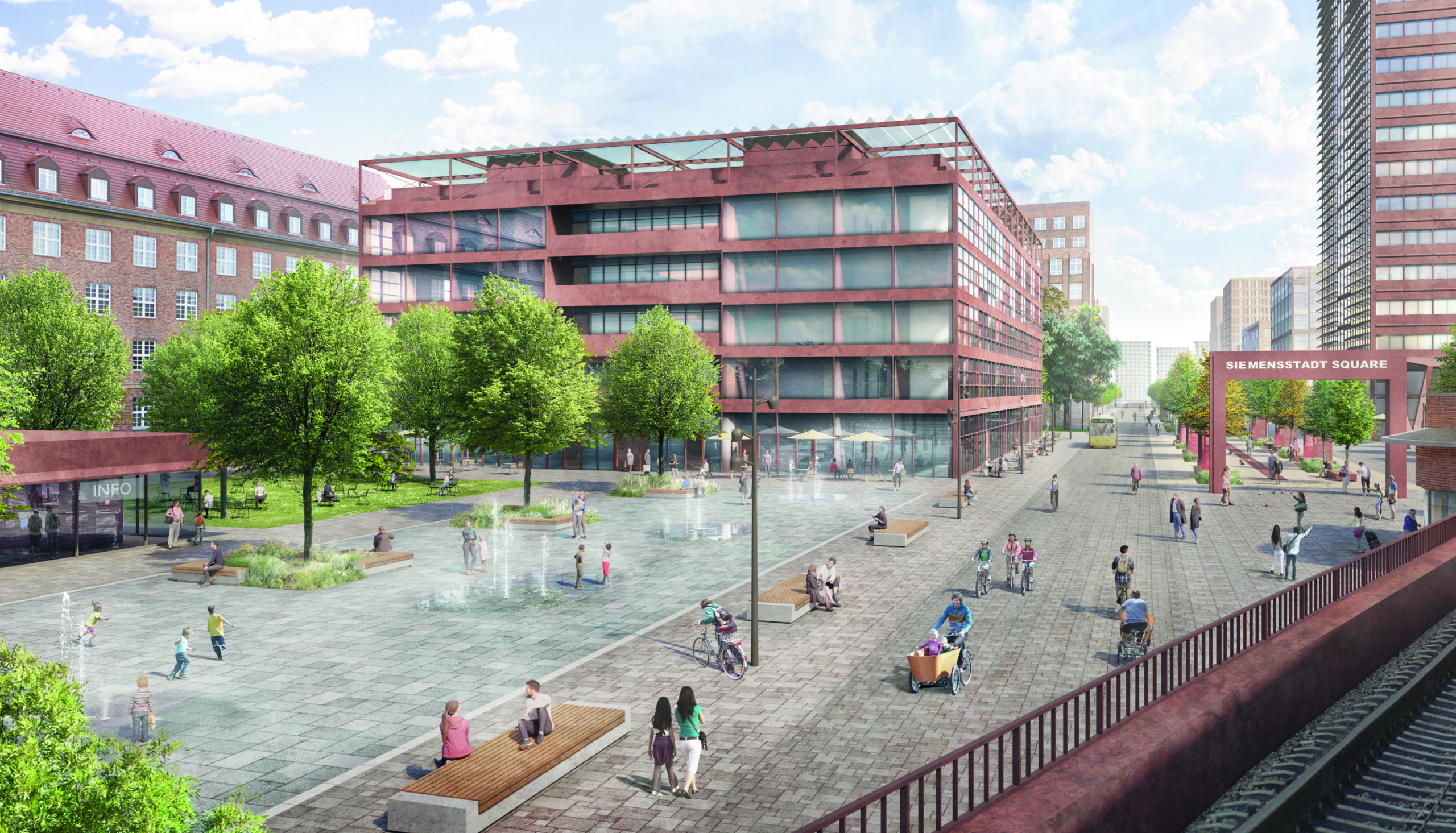Shaping the built environment for sustainability

Reduce and reuse are two of the first Rs of recycling, and it is very important they are before any of the others. The goal is to remove as many waste streams as possible before devoting the energy to other Rs like recycle or remanufacture. And in the spirit of reduce and reuse is a very cool project Siemens is working on in Germany – Siemensstadt Square. By repurposing old buildings and using technology to make the urban area more efficient, Siemens is hoping to turn the area into a model of what a sustainable urban development can accomplish.
Planned to have 35,000 people living, working, learning, and researching in this Berlin neighborhood, Siemensstadt Square will be a carbon-neutral and energy efficient test case for city planning around the world. There are so many cool things being planned for the site, and I would recommend checking out the website for some more information but lets take a look at what is happening to make Siemensstadt sustainable even beyond the reuse of building and reduced energy demands.
Building resources
As not all the building are up the standards needed for safety and sustainability, building new structures sustainably is an important consideration in reaching net-zero. To do this demolition materials will be used on site to reduce the impact from transporting heavy materials in and out of the construction area. Low CO2emission materials and carbon sinks materials will also be used for new construction. Anything that is not used, but brought on site or left over from demolition, will provide a material stream for Siemensstadt to become a raw materials depot. Through both digitalization and social networking, the team is helping accelerate the transformation to a circular economy so that we can then help our customers on their journeys.
Green infrastructure
Urban environments have traditionally brought many unexpected changes to the livability of an area, most notably in regard to temperature and air quality. By designing the urban quarter with the natural world in mind, the goal is to create a symbiosis with the built and the natural. By retaining greenspaces and natural shading, we can limit the heat island effect often seen in urban areas. And through an integrated rain water management system we can reduce the harms of non-permeable surfaces like concrete – reducing the impact of heavy rainfall and further nurturing outdoor spaces. If you are interested you can learn more about water management at Siemensstadt in Sponge City.
It may seem like a given to many around the world, but another important aspect of Siemensstadt’s green infrastructure is short distances between essential services and multimodality. Being able to walk, bike, ride, or any other form of low impact locomotion is important to creating a net-zero urban area. And links to public transportation networks extend the range of people living in or coming to Siemensstadt Square. Because we are working with the region on this project, one of the old rail lines is getting updated to improve transit in and out of the area.
Energy use
Access to renewable energy is critical to Siemensstadt as a carbon-neutral urban district, it is one of the few continuous resources streams after the buildings have been constructed. To make sure there is ample energy available, there needs to be generation on site for electricity, mobility, and heating. And any additional supply needs to be available from renewable sources in the region. In addition to energy sources, the plan is to reduce energy sinks as much as possible – making the buildings as efficient as possible and finding a use for any waste energy (often in the form of heat). Much like other mixed-use urban areas, there is an opportunity to optimize energy use across the many users. Waste heat from one building can heat another, the time of use for electricity can be shifted for some businesses to reduce calls for energy beyond the urban area, and smart planting or window placement can reduce the effective energy needs of buildings and instead rely on natural heat and cooling cycles.
An interesting project to watch
I don’t know how much will come to fruition at Siemensstadt, it is a big project and will take years to complete. But it is exciting to see people, businesses, and governemnts working together to find what is possible for the urban environment. Hopefully the goal of sustainability will uncover interesting and innovative ways to make our built environment less impactful on us, our animal neighbors, and the environment.
For more information on the Siemensstadt Square project check out our website. There is so much more to dive into, like the bee colonies being kept by Siemens employees to aid pollination and ecosystem health or the transportation project to bring the area onto the German rain network.
Siemens Digital Industries Software helps organizations of all sizes digitally transform using software, hardware and services from the Siemens Xcelerator business platform. Siemens’ software and the comprehensive digital twin enable companies to optimize their design, engineering and manufacturing processes to turn today’s ideas into the sustainable products of the future. From chips to entire systems, from product to process, across all industries. Siemens Digital Industries Software – Accelerating transformation.
For more information on Siemens Digital Industries Software products and services, follow us on LinkedIn, Twitter, Facebook and Instagram.


